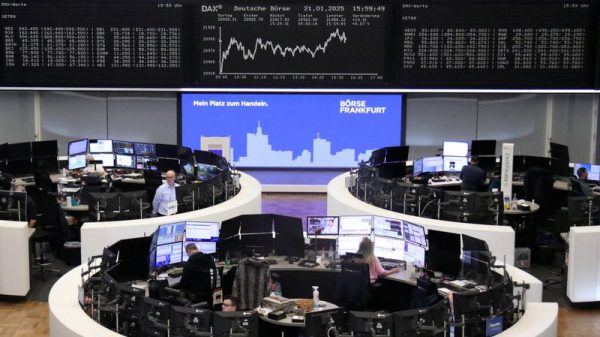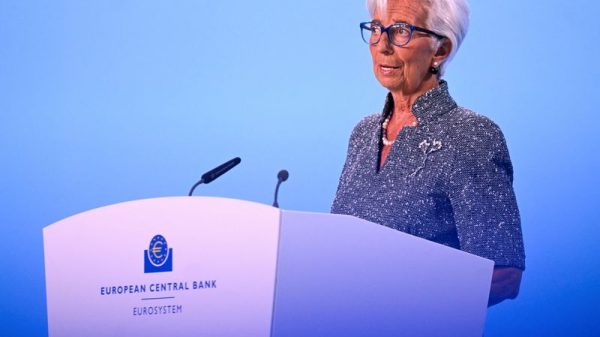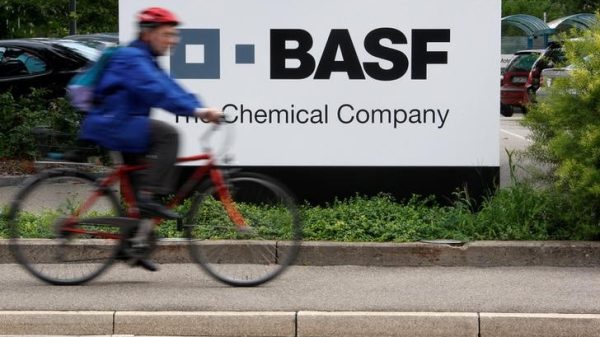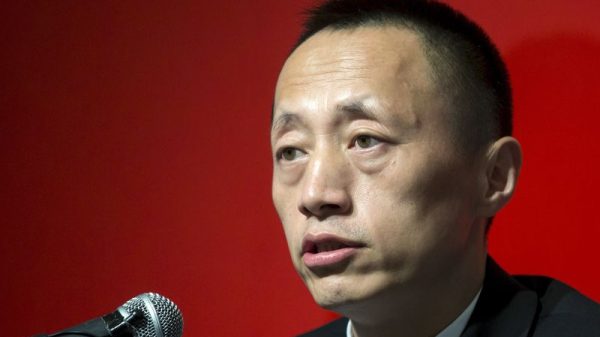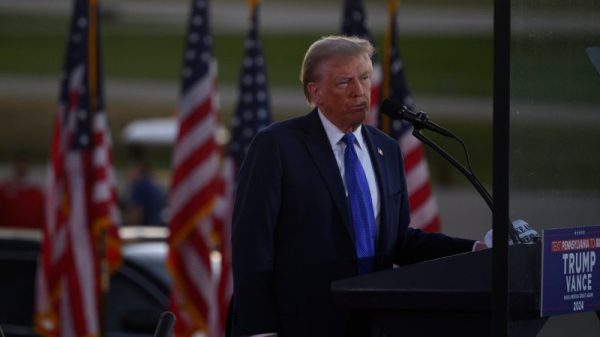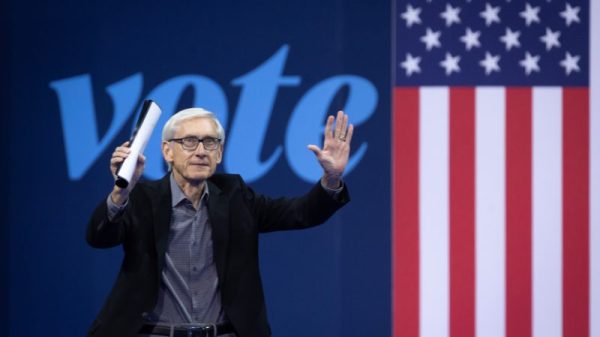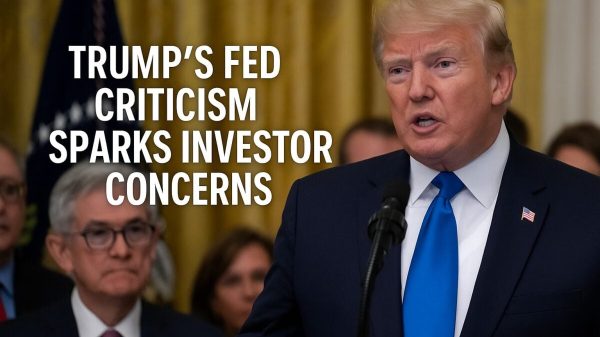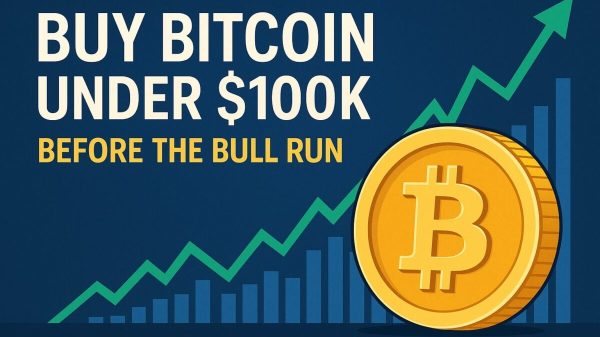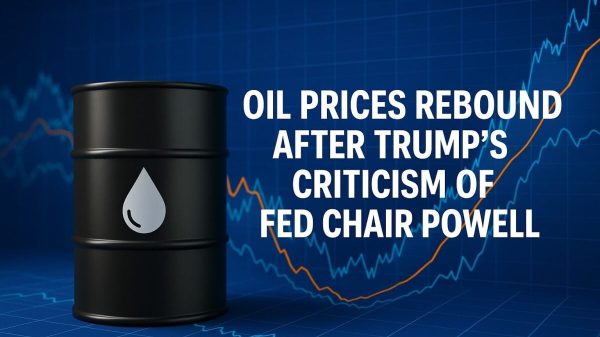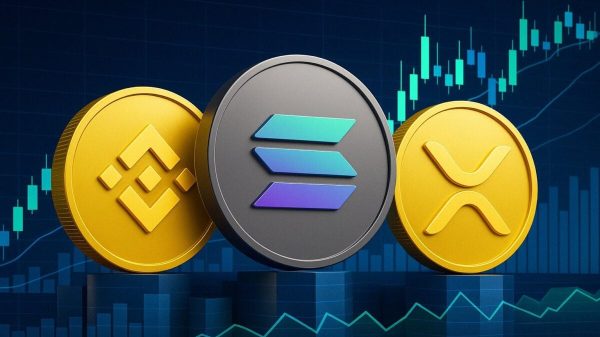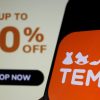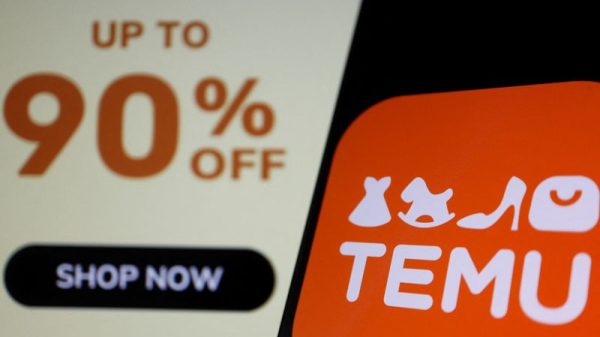In the third quarter of 2024, SFL Corporation (NYSE: NYSE:SFL) reported robust financial results with revenues surpassing $260 million and a net income of approximately $45 million, or $0.34 per share. The company declared its 83rd consecutive dividend of $0.27 per share, showcasing a strong 10% yield. The fixed rate backlog was reported at around $4.7 billion, with a substantial portion coming from investment-grade customers. SFL’s fleet expansion continues with the delivery of seven new vessels and the ordering of five new large container vessels with 10-year charters.
Key Takeaways
SFL Corporation’s revenues exceeded $260 million, with an EBITDA equivalent cash flow of about $167 million.
Net income stood at around $45 million, or $0.34 per share, up from the prior quarter.
The company declared an 83rd consecutive dividend of $0.27 per share, yielding approximately 10%.
SFL has a fixed rate backlog of approximately $4.7 billion, with a majority from investment-grade customers.
The fleet has expanded to 81 vessels, including the recent addition of seven new vessels and the order of five large container vessels.
Operating costs increased to about $32 million, mainly due to the full operational costs of the Hercules rig and new vessel deliveries.
Company Outlook
SFL is focused on expanding its fleet with modern eco-designed vessels for delivery in 2028.
The company is strategically phasing out older, less fuel-efficient container vessels to improve overall fleet fuel efficiency.
The Hercules rig is expected to commence revenue generation in Q4 following its mobilization to Norway.
Bearish Highlights
Contract revenue decreased to approximately $70 million from $90 million in the previous quarter.
Operating costs rose significantly due to the full operational costs of the Hercules rig and amortized mobilization costs.
Bullish Highlights
Adjusted EBITDA increased to approximately $167 million from $131 million in the previous quarter.
The company successfully issued a NOK 750 million bond with a 3.25% coupon rate, refinancing existing debt.
SFL secured financing of about $1 billion this year, with $700 million drawn down during the quarter.
Misses
Under U.S. GAAP, total operating revenues were reported at approximately $255 million, lower than the $263 million in gross charter hire received.
Q&A Highlights
Operating expenses are currently around $200,000 per day, which can be significantly reduced between contracts to a safe target of $75,000 to $100,000 per day.
The company sold a 2005-built 1,700 TEU container vessel chartered to Maersk and is considering the rechartering or sale of other older vessels.
SFL Corporation’s third-quarter results demonstrate the company’s continued financial growth and strategic fleet management. With a strong dividend yield and a significant backlog, SFL remains focused on enhancing its fleet’s fuel efficiency and operational capabilities. The company’s proactive approach to capitalizing on market opportunities and managing operational costs underscores its commitment to generating value for shareholders.
InvestingPro Insights
SFL Corporation’s robust financial performance in Q3 2024 is further illuminated by key metrics from InvestingPro. The company’s impressive gross profit margin of 62.99% for the last twelve months ending Q2 2024 underscores its operational efficiency, aligning with the strong EBITDA and revenue growth reported in the earnings.
An InvestingPro Tip highlights that SFL has maintained dividend payments for 21 consecutive years, which is consistent with the company’s declaration of its 83rd consecutive dividend. This long-standing commitment to shareholder returns is reflected in the current dividend yield of 10.08%, as reported by InvestingPro, making it an attractive option for income-focused investors.
The company’s revenue growth of 18.81% over the last twelve months ending Q2 2024 supports the narrative of fleet expansion and increased operational activity mentioned in the earnings report. This growth trajectory is particularly noteworthy given SFL’s market capitalization of $1.41 billion.
It’s worth noting that while SFL trades at a P/E ratio of 11.17 (adjusted for the last twelve months), an InvestingPro Tip suggests it’s trading at a high P/E ratio relative to near-term earnings growth. This could indicate that investors are pricing in the company’s future growth prospects, including the new vessel deliveries and long-term charters mentioned in the report.
For investors seeking a more comprehensive analysis, InvestingPro offers 11 additional tips that could provide deeper insights into SFL’s financial health and market position.
Full transcript – SFL Corporation Ltd (SFL) Q3 2024:
Espen Nilsen Gjøsund: Hello, everyone, and welcome to SFL’s Third Quarter 2024 Conference Call. My name is Espen Nilsen. I’m Vice President of Investor Relations in SFL. Our CEO, Ole Hjertaker, will start the call with an overview of the third quarter highlights. Then our Chief Operating Officer, Trym Sjølie, will comment on vessel performance matters; followed by our CFO, Aksel Olesen, who will take us through the financials. The conference call will be concluded by opening up for questions, and I will explain the procedure to do so prior to the Q&A session. Before we begin our presentation, I would like to note that this conference call will contain forward-looking statements within the meaning of the U.S. Private Securities Litigation Reform Act of 1995. Words such as expects, anticipates, intends, estimates or similar expressions are intended to identify these forward-looking statements. Forward-looking statements are not guarantees of future performance. These statements are based on our current plans and expectations and are inherently subject to risks and uncertainties that could cause future activities and results of operations to be materially different from those set forth in the forward-looking statements. Important factors that could cause actual results to differ include, but are not limited to, conditions in the shipping, offshore and credit markets. You should therefore not place undue reliance on these forward-looking statements. Please refer to our filings within the Securities and Exchange Commission for a more detailed discussion of risks and uncertainties, which may have a direct bearing on operating results and our financial condition. Then I will leave the word over to our CEO, Ole Hjertaker, with highlights for the third quarter.
Ole Hjertaker: Thank you, Espen. We are now announcing our 83rd dividend and continue building our unique profile as a maritime infrastructure company with a diversified fleet. We reported revenues of more than $260 million this quarter, and the EBITDA equivalent cash flow in the quarter was approximately $167 million, which is significantly up from the second quarter. Over the last 12 months, the EBITDA equivalent has been $580 million. The net income came in at around $45 million in the quarter or $0.34 per share. And we had positive contributions relating to profit share on Capesize bulkers and fuel cost savings or $4.2 million in the quarter, offset by approximately $5.6 million in negative non-cash mark-to-market and one-off items. Due to U.S. GAAP accounting rules, the revenue and expense in the quarter for the drilling rig Hercules also includes the mobilization period that started in the second quarter. Our CFO, Aksel Olesen, will give more details on this when he goes through the numbers for the quarter. Our fixed rate backlog stands at approximately $4.7 billion. And importantly, two-thirds of this is to customers with investment-grade rating, giving us a unique cash flow visibility. This backlog figure excludes revenues from the vessels trading in the short-term market and also excludes revenues on the new dual-fuel chemical carrier that will operate in a pool with Stolt Tankers. It also excludes future profit share optionality, which we have seen can contribute significantly to our net income. And in line with our commitment to return value to shareholders, we are paying a quarterly dividend of $0.27 per share or around 10% dividend yield. Most of our vessels are on long-term charters, and we have over the last 10 years, completely transformed the company’s operating model, making us relevant for large end users like Maersk, Volkswagen (ETR:VOWG_p) Group and Vitol. We have been busy renewing and extended multiple existing charters and have also recently ordered five large container vessels in combination with 10-year time charters adding $1.2 billion in that transaction alone. In addition, we have taken delivery of seven new vessels so far this year, including four vessels during the third quarter. We are also in the process of upgrading several other vessels and our Chief Operating Officer, Trym Sjølie will talk more about this later. During the quarter, we raised another unsecured bond loan, the 16th in a row. This was issued as a floating rate note in Norwegian kroner and we have swapped it to U.S. dollars at approximately 6.45% fixed interest. This was primarily used to refinance a bond loan that was due to expire in early 2025. It has also been a busy quarter from a financing perspective where we have effectively addressed virtually all short-term asset debt maturities, matching funding with charter tenors. And with that, I will give the word over to our COO, Trym Sjølie.
Trym Sjølie: Thank you, Ole. When including our newbuilding program as well as the six vessels delivered this year, we have 81 maritime assets in our portfolio and our backlog from owned and managed shipping assets stands at $4.7 billion. The current fleet is made up of 15 dry bulk vessels, 39 container ships, 18 tankers, seven car carriers and two drilling rigs. We have a diversified fleet of assets chartered out to first-class charterers on mostly long-term charters. Container vessels is the largest segment with almost 65% of the backlog. In the third quarter, 96% of charter revenues from all assets came from time charter contracts and only 4% from bareboats or dry leases. In addition to fixed rate charter revenues, we have had significant contribution to cash flow from profit share arrangements over time, both relating to charter rates and cost savings on fuel. In Q3, profit split arrangements have contributed about $4.3 million. Out of the 81 vessels and rigs, we have 11 container ships on bareboat type contracts and the rest of the fleet on time charter or spot trading. Our operation is quite complex with vessels across multiple sectors, and we have our own commercial operation out of Oslo and operational and technical management out of Singapore and Stavanger. In Q3, we had about 6,700 operating days, defined as calendar day less technical off-hire and dry dockings. Three vessels have been in dry dock in the quarter, and our overall utilization across the fleet in Q3 was about 99%. The charter revenue from our fleet was $263 million in Q3, which is up from Q2 mainly due to the drilling rig liners being back in operation end of July after a special periodic survey. The drilling rig Hercules entered a contract in Canada end of October and is currently on our way across the Atlantic to the West Coast of Norway. As part of our decarbonization and commercial strategy, we continue to invest in new vessels as well as upgrades to our existing fleet. Our fleet has lately been enhanced by 11 LNG dual-fuel vessels and three LR2 tankers. It’s four newbuilding 7,000 CEU car carriers have already been delivered to charterers, Volkswagen and K-Line, and two, 33,000 deadweight ton LNG dual-fuel stainless steel chemical tankers have been delivered and are on service to Stolt Tankers. Five, 16,800 teu container vessel newbuilds are to be delivered in 2028. And by October, all three of our newbuilding LR2s have been delivered to Vitol. Our investment in fleet upgrades continues. And in Q3, we had three vessels in dry dock where energy saving devices and upgrade works were also carried out. Such investments in cooperation with our charterers is important as a way to grow our relationship and increased backlog from existing vessels. Earlier this year, we increased the backlog to merge with new five-year charters for seven of our large container vessels, which is a result of our close relationship and cooperation on vessel upgrades and performance enhancements. The first four 8,700 teu vessels will dock from December onwards. And the upgrades include energy-saving devices and increased cargo intake, boosting cargo capacity to about 9,500 teu while also reducing fuel consumption. Another three, 11,000 teu vessels will dock from Q2 next year also with energy and cargo system upgrades to be carried out. On the Hapag-Lloyd charters, the remaining three vessels out of six will be completed in Q4 before delivery to Hapag-Lloyd on the new five-year time charges. A key tool in delivering on the various projects is a strong operations, technical and newbuilding team who can work in close contact by charterers. Fleet renewal and upgrades improves energy and operational efficiency of our vessels. This is increasingly important in a new world of ever tightening environmental regulations, both regionally and globally. I will now give the word over to our CFO, Aksel Olesen, who will take us through the financial highlights of the quarter.
Aksel Olesen: Thank you, Trym. On this slide, we have shown our pro forma illustration of cash flows for the third quarter. Please note that this is only a guideline to assess the company’s performance and is not in accordance with U.S. GAAP, and also net of extraordinary and non-cash items. The company generated gross charter hire of approximately $263 million during the third quarter with approximately $89 million coming from our container fleet. This includes approximately $2.4 million in profit share related to fuel savings on seven of our large container vessels. The car carrier fleet generated approximately $26 million of gross charter hire in the quarter, including profit share from fuel savings. Our tanker fleet generated approximately $37 million in gross charter hire up from approximately $30 million in the previous quarter, following the delivery of three tanker vessels during the quarter. SFL has 15 dry bulk vessels, of which eight are employed on long-term charters. The vessels generated approximately $25 million in gross charter hire including approximately $1.7 million profit share generated from our eight capesize vessels on long-term charters to Golden Ocean. The seven vessels employed in the spot and short-term market contributed with approximately $8.4 million in net charter hire compared to approximately $8.2 million in the second quarter. In the third quarter, our energy assets generated approximately $86 million in contract revenues compared to approximately $29 million in the second quarter. Linus is under a long-term contract with ConocoPhillips (NYSE:COP) in Norway until May 2029. During the quarter, revenues from the rig was approximately $16 million compared to approximately $10 million in the second quarter as rig resumed operations in late July after finalizing its 10-year special survey. As of November 1, the rig’s contract rate has been adjusted upwards to approximately $224,000 per day under the market adjustment rate mechanism. During the third quarter, the Hercules commenced its drilling contract with Equinor in Canada. Revenue and costs associated with drilling contracts are recorded in accordance with U.S. GAAP, which specifies that mobilization and demobilization fees and associated mobilization costs are to be recorded over they spent drilling during a contract. For the third quarter, we recorded approximately $70 million in contract revenue compared to approximately $90 million in the second quarter. Operating costs increased approximately $32 million, up from approximately $11 million in the second quarter, as a rig recorded full operating costs from early July plus amortized mobilization costs deferred from the second quarter as per the accounting standards just mentioned. Our operating and G&A expenses for the quarter was approximately $99 million compared to approximately $70 million in the second quarter, mainly due to the Hercules being back on the contract for most of the quarter. This summarizes to an adjusted EBITDA of approximately $167 million compared to $131 million in the previous quarter. Then move on to the profit and loss statement as reported under U.S. GAAP. As we have described in previous earnings calls, our accounting statements are different from those of a traditional shipping company. And that’s our business strategy focuses on long-term charter contracts. Some parts of our activities are classified as capital leasing. Therefore, a portion of our charter revenues are excluded from U.S. GAAP operating revenues, this includes repayment of investment in sales type, direct financing leases and leaseback assets and revenues from entities classified as investment in associates for accounting purposes. So for the third quarter, we report total operating revenues according to U.S. GAAP of approximately $255 million, which is less than approximately $263 million of charter hire actually received for reasons just mentioned. This includes profit share income of approximately $4.2 million from fuel savings on some of our large container vessels, our car carriers and our eight Capesize dry bulk vessels on charter to Golden Ocean. During the quarter, we had an increase in vessel operating expenses mainly due to new vessel deliveries, scheduled dry dockings and the Hercules being back on contract for most of the quarter. We also had an increase in depreciation and tax driven by new vessel deliveries and Hercules operations in Canada, respectively. So overall, and according to U.S. GAAP, the company reported a net profit of approximately $44.5 million or $0.34 per share compared to approximately $20.6 million or $0.16 per share in the previous quarter. Moving on to the balance sheet. At quarter end, SFL had approximately $164 million of cash and cash equivalents. The company also had marketable securities of approximately $4.6 million in addition to debt-free vessels with an estimated market value of approximately $90 million. In September, the company issued a new NOK bond of NOK 750 million in the Nordic credit market. The loan bears a coupon of 3.25% above the 3-month NIBOR reference rate and the term is five years. The cash flows are swapped approximately $71 million, and the interest rate is fixed at approximately 6.45%. In connection with the new offering, SFL exercised its option to redeem the NOK 600 million bond, which was due in January 2025. The company has recently concluded financing arrangements of approximately $1 billion to approximately $700 million being draw down during the quarter and the balance subsequent to quarter end. During the third quarter, the company paid the first yard instalment of 10% relating to newbuilding order of five 16,800 teu container vessels with delivery in 2028. Another 5% is estimated due at the end of the fourth quarter, and the balance is due closer to delivery. We expect this to be financed by pre-delivery and post-delivery loan facilities. And finally, in July, the company raised $100 million in gross proceeds from U.S. public offering by issuing 8 million common shares. So based on the Q3 numbers, the company had a book equity ratio of approximately 28%. Then, to conclude. The Board has declared the 83rd consecutive cash dividend of $0.27 per share, which represents a dividend yield of approximately 10%. Following the recent investment and charter renewals, our fixed charter rate backlog currently stands at $4.7 billion, providing us with strong visibility on our cash flows going forward. The company has a strong balance sheet and liquidity position, and we recently raised $100 million of gross proceeds in a public equity in addition to more than $1 billion of financing so far this year to address both refinancing of existing vessels and new acquisitions. And with that, we conclude the presentation and move on to the Q&A session.
A – Espen Nilsen Gjøsund: Thank you, Aksel. We’ll now open for a question-and-answer session. [Operator Instructions] And we have our first question from Sherif Elmaghrabi. Please unmute your speaker and ask your question.
Sherif Elmaghrabi: Hi. Thanks for taking my questions. Ole, historically, some container ships have done some sale and leasebacks to help with fleet management. Do you expect that to happen this year? And is that something that something that could be an opportunity for SFL?
Ole Hjertaker: Well, we have a significant number of container ships in our fleet. And from time to time, we have also acquired container ships directly from liner companies. We have gone more away from doing more financial, call it, sale leasebacks, which is really a high levered financing in reality. So we have some legacy assets there. But I would say all the investments we’ve done over the last five, six years have been long-term time charters. And we think those deals have worked out pretty well. And I think also having an operational platform like we have built up now makes us relevant for the likes of Maersk and Hapag-Lloyd and Volkswagen and others. So we, of course, wouldn’t mind do more business in that segment as we also look for opportunities in all the sectors that we focus on.
Sherif Elmaghrabi: Thanks. And with the Hercules mobilizing to Norway, how do contracting prospects there shape up versus Canada or Namibia? And just any color you can provide on how conversations are going with potential charters?
Ole Hjertaker: Well, yes. The rig recently finalized drilling for Equinor in Canada has been working there since July. And it’s now being moved to Norway. It’s a pretty efficient location given the distance and you call it maritime traveling distance, that’s why we take it to the North Sea. There are opportunities in the North Sea. And remember, this rig has previously worked during the winter time up in the Barents Sea under ultra harsh environment. So it’s a very capable rate, and it’s managed by Odfjell who is, I would say, deemed to be among the top two or three operators of the most sophisticated drilling rigs out there. So we are looking for opportunities, both in the North Sea and in West Africa, primarily near term, we don’t see so many opportunities in Canada, but we expect that to come back later next year or into 2026. So near term, we focus more on North Sea and West Africa. We cannot be specific on discussions and the opportunities we see, but we believe Odfjell also announced their earnings today, they had this single – a positive outlook on the market segment.
Sherif Elmaghrabi: Okay. Thanks very much for taking my questions.
Ole Hjertaker: Thank you.
Espen Nilsen Gjøsund: All right. We will take our next question from Climent Molins. Climent, go ahead.
Climent Molins: Good afternoon. Thank you for taking my questions. I wanted to follow up on Sherif’s question on the Hercules. And first of all, I was wondering, do you expect to recognize any revenue on Q4 from the contract with Equinor in Canada?
Ole Hjertaker: Yes, thank you. Yes, we have – I mean, the rig has been working now virtually to the end of October. So there’s been a full month on higher plus were also compensated for moving the rig afterwards. So we are effectively covered for, say, two out of three months in the fourth quarter. And of course, while we wait for the next contract, we will, of course, adjust and trim expenses along with that, there will be a decent contribution from the rig also this quarter.
Climent Molins: Makes sense. Thanks for the color. And this one is more from a modeling perspective, but should the asset remain open throughout part of 2025, could you provide some commentary on the expenses you would expect maybe on a daily basis?
Ole Hjertaker: Yes. You have – when the rig is working as it has been both in Namibia and Canada now in two rounds, we have seen operating expenses in the region around $200,000 per day. That is, of course, with full marine crew, full operational crew, full drilling activities ongoing day and night with that rotation pattern. So when we – in between contracts, we can reduce operating expenses a lot, and then it’s really more down to how do we – how much of the equipment do we want? And do we need to run all the time to make sure that it’s ready to go that it’s hot and can go straight out and drill on a new contract. So from a modeling perspective, I think if you if you put in $75,000 to $100,000 per day, you should be pretty safe. On the cost side, we will, of course, manage cost and limit that as much as we can. But our primary objective here is to get the rig out working again. So we generate positive cash flows from the rig in operations.
Climent Molins: Makes sense. This was kind of like the worst-case scenario. That’s all for me. Thank you for taking my questions.
Ole Hjertaker: Thank you.
Espen Nilsen Gjøsund: Next (LON:NXT), we’ve received a question on the site here. You’ve sold a 2005-built container vessel. What are your plans for the other older container vessels in the fleet?
Ole Hjertaker: Yes. Thank you. It’s correct. We recently sold a 2005-built feeder vessel, 1,700 teu. And that container ship has been on a contract with Maersk now for a period. And as we have seen over time now we typically own vessels until we see that we cannot really charter these vessels longer term. And typically, we sell them on vessels that are older than 20 years. So as this now is approaching the 20-year anniversary next year, we feel that this is an opportune time to dispose of the vessel with a nice profit from that sale. We also have some other legacy older container ships in the fleet. We have seven, 4,100 teu container ships with MSC. That’s really on a bareboat financing structure. Those vessels will – there is – there are purchase obligations on those vessels, basically early second quarter next year. So those vessels would also then effectively be phased out. And then we have a sister vessel of the vessel we recently announced and we now are now sold that’s also coming off charter, again, with Maersk during the second quarter. And we have to assess what we do with that vessel over time. We may recharter it or we may sell it similar as we did with the one we just announced now. So we are monitoring that market, of course, very closely. A positive side effect of doing this with these older vessels is that these are also from a fuel efficiency perspective, the least efficient vessels in the portfolio. And if you look away from the seven, 4,100s and then old 1,700 that’s remaining, all the other vessels are modern eco-design vessels built from 2013 other words with ECO engines, et cetera. So the effect of that is that we will actually have an improvement in our fuel efficiency ratio.
Espen Nilsen Gjøsund: Thank you, Ole. Okay. As there are no further questions from the audience, I would like to thank everyone for participating in this conference call. If you have any follow-up questions to the management, there are contact details are in the press release or you can get in touch with us through the contact page on our web page, www.sflcorp.com. Thank you all.
This article was generated with the support of AI and reviewed by an editor. For more information see our T&C.




